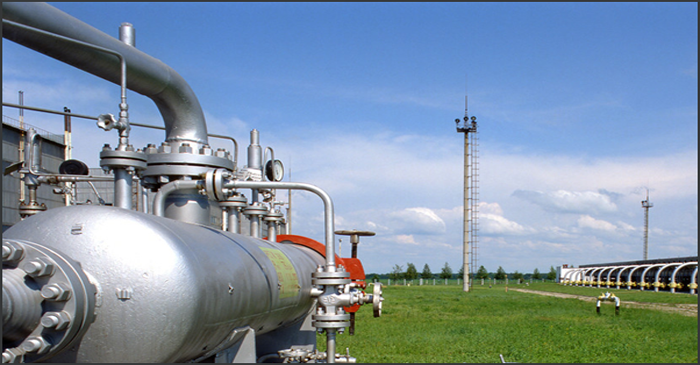Environmental Safeguards
Uncontrolled fires in gas storage facilities can lead to significant environmental harm, including air pollution and contamination of nearby ecosystems.
Fire barriers help mitigate these risks by containing hazardous events.
Regulatory Compliance
Many jurisdictions mandate the use of fire barriers in gas storage facilities as part of comprehensive fire safety regulations. Compliance with these standards is crucial for operational licensing and liability protection.
Types of Fire Barriers Used in Gas Storage Facilities
Firewalls
Firewalls are robust, fire-resistant walls designed to withstand intense heat and flames for extended periods. They are typically constructed using materials like concrete or fire-resistant bricks and are strategically placed to isolate high-risk areas.
Firewalls
Fire-resistant doors provide access control while maintaining the integrity of fire compartments. These doors are rated based on their ability to resist fire and smoke penetration for specified durations.
Firewalls
Structural elements such as steel beams and columns can be treated with fire-resistant coatings to prevent structural failure during a fire.
Firestopping Materials
Firestopping materials seal gaps and penetrations in fire-rated barriers, ensuring that fire does not spread through openings created for pipes, cables, or ducts.
Challenges in Implementing Fire Barriers
Complex Facility Layouts
Gas storage facilities often feature intricate layouts with multiple storage tanks, pipelines, and equipment. Designing fire barriers that provide optimal
protection without disrupting operations is a challenging task.
Material Selection
Choosing the right fire-resistant materials requires careful consideration of factors such as fire ratings, durability, and compatibility with the facility’s environment.
Maintenance Requirements
Over time, fire barriers can degrade due to environmental exposure, physical wear, or facility modifications. Regular inspections and maintenance are necessary to ensure their effectiveness.
Integration with Other Fire Safety Measures
Fire barriers must work seamlessly with active fire protection systems, such as sprinklers and gas detection systems, to create a comprehensive safety strategy.
Best Practices for Effective Fire Barrier Implementation
Risk Assessment
Conducting a thorough risk assessment is the first step in designing an effective fire barrier system. This involves identifying high-risk areas, potential ignition sources, and critical assets that need protection.
Adherence to Standards
Compliance with industry standards and regulations, such as NFPA (National Fire Protection Association) guidelines, is essential for ensuring the reliability and effectiveness of fire barriers.
Professional Installation
Engaging certified professionals for the installation of fire barriers ensures that they are built to specifications and function as intended during an emergency.
Regular Inspections and Maintenance
Periodic inspections and maintenance are crucial to address wear and tear, environmental damage, or changes in facility layout that may compromise the integrity of fire barriers.
Training and Awareness
Facility personnel should be trained on the role of fire barriers, their locations, and the importance of maintaining their integrity during routine operations or emergencies.
Training and Awareness
Facility personnel should be trained on the role of fire barriers, their locations, and the importance of maintaining their integrity during routine operations or emergencies.
Case Studies Highlighting the Importance of Fire Barriers
Incident at a Gas Storage Facility
In a notable fire incident at a gas storage facility, the presence of well-designed firewalls and fire-resistant coatings on storage tanks prevented the fire from escalating. Although the fire caused localized damage,
the containment ensured the safety of nearby infrastructure and minimized environmental impact.
Lessons from Neglect
Conversely, a lack of effective fire barriers in another facility led to the rapid spread of a fire, resulting in widespread damage, prolonged operational downtime, and significant environmental contamination.
This highlights the critical role that fire barriers play in mitigating disaster.
Emerging Trends in Fire Barriers
Advanced Materials
Innovations in fire-resistant materials, such as lightweight composites and intumescent paints, are enhancing the performance and versatility of fire barriers.
Smart Fire Barriers
Integrating sensors and monitoring systems into fire barriers enables real-time tracking of their condition and effectiveness, allowing for predictive maintenance and quicker response during emergencies.
Sustainable Solutions
Eco-friendly fire barrier materials are gaining popularity, aligning fire safety with environmental sustainability goals.
Conclusion
Fire barriers are indispensable for ensuring the safety and resilience of gas storage facilities. By containing fires, they protect lives, assets, and the environment while ensuring compliance with regulatory
standards. Investing in robust fire barrier systems and maintaining them diligently is not just a safety measure but a strategic decision to safeguard critical infrastructure from the devastating consequences of fire.
